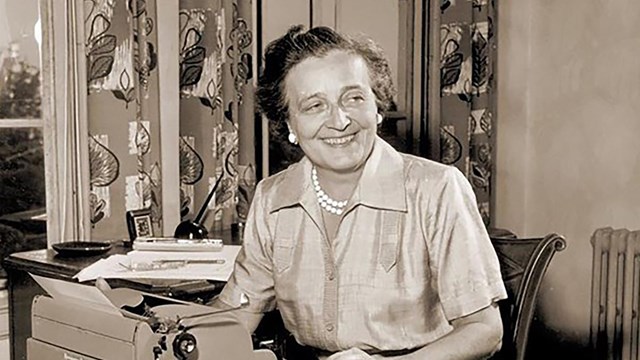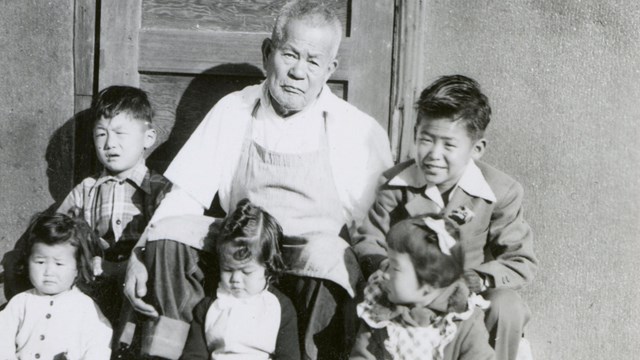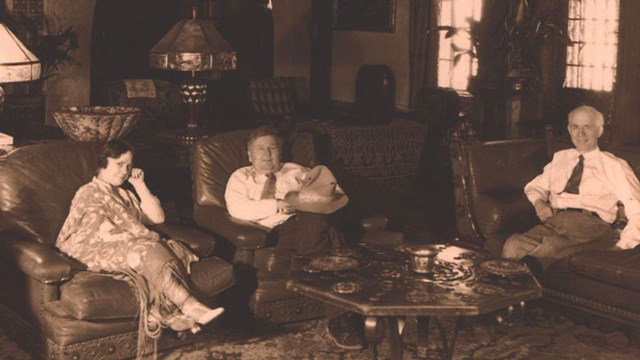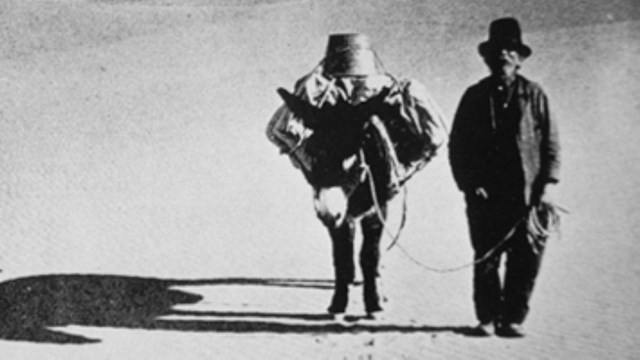
Women of Change
Histories of several determined and inspiring women who long ago lived in the Death Valley area and influenced the future national park. 
Incarcerated Japanese Americans
When a revolt broke out at Manzanar in 1942, the US government moved 60 incarcerated Japanese & Japanese Americans to Death Valley. 
Death Valley Dreamers
Together, Albert Johnson, Bessie Johnson, and Death Valley Scotty built the legacy of Scotty's Castle. 
Desert Prospectors
Prospectors have been drawn to Death Valley in search of wealth and success for over one hundred years. Land of a Thousand StoriesThe human stories in this vast land are as numerous as the variations of color found in the hills and valleys here. Whether it was the lure of mineral wealth or the resort industry that brought people here, every person who entered this valley experienced it in a different way. Exploring those differences is what makes a study of the ethnic history of Death Valley so exciting and challenging. Native AmericansThe Timbisha Shoshone lived here for centuries before the first white man entered the valley. They hunted and followed seasonal migrations for harvesting of pinyon pine nuts and mesquite beans with their families. To them, the land provided everything they needed and many areas were, and are, considered to be sacred places. Black Forty-NinersThe party of emigrants coming into Death Valley in 1849 had an experience that would ultimately establish Death Valley’s morbid reputation. While much is known about some of the members of this group, the histories of others remain hidden. There were 3 black men in the group of '49ers who traversed Death Valley during that fateful trip. They were Negro Joe, Little West and Smith. Negro Joe was possibly the slave of Dr. Fred Carr. Little West was a slave, unknown owner, probably from Mississippi and Smith, the third man, was from Missouri. Smith traveled with a group of German immigrants for a time and then followed the Jayhawkers. His ultimate fate was unknown but it was rumored that he was killed by Indians after leaving Panamint Valley. How did Smith happen to be traveling with the ‘49ers? What were the experiences of Negro Joe and Little West here? Their stories remain an intriguing mystery. Chinese WorkersAs silver and borax discoveries brought people into Death Valley in the late 1800’s, another ethnic group came into the Valley. Chinese workers built Panamint City in the 1870’s, but they didn’t stay in the area. Another group of Chinese immigrants toiled in the successful mining operation at Harmony Borax Works. They made a road 160 miles long through the salt pinnacles and raked the borax off the valley floor from 1883 until 1888 when the last 20 mule teams rolled out of the valley. Then, they too disappeared, leaving only bits of broken bottles, pottery shards and remnants of porcelain in their place. What were their feelings about this place? Did they ever come back? Questions with no known answers. Basque HistoryThe Basque history of Death Valley has produced several people of note. Dolph Nevares was employed by the Pacific Coast Borax Company as the Greenland Ranch caretaker in 1900 and later, as a prospector for borax. He left the borax company and settled at Cow Creek where he grew fruits and vegetables. “One day I looked around wondering where time had gone--50 years of it.” Eventually Dolph left Death Valley and moved to San Bernardino. Domingo Etcharren was known as the Basque butcher from Ballarat. He was also the prospecting partner of Jack Keane. In December 1903 they found gold. Domingo took his profits and bought land in Darwin, becoming a leading citizen of that town. He and Pete Aguereberry, another Basque, were good friends. Pete had come into Death Valley in the summer of 1905 to prospect. While traveling with Shorty Harris, he found gold. In the aftermath of that strike the town of Harrisburg came into being. Long after Harrisburg had boomed out, Pete continued to work in his Eureka mine until death stopped the old prospector and miner in 1945. |
Last updated: January 28, 2025
